It was a beautiful, calm spring morning in February. Lush tea gardens carpeted the landscape on either side of the road through which the car was passing. I was travelling from Jorhat town towards the Hollongapar Gibbon Sanctuary in the Jorhat District of Assam to set my eyes on a highly threatened species – the Western Hoolock Gibbon. Like the chimpanzees and gorillas of Africa and the orangutans of Southeast Asia, the hoolock gibbons are also apes, a group of tail-less primates, which also includes us, the Homo sapiens. But the gibbons are largely left out of the spotlight, unlike the other apes that feature so heavily in popular culture.
The nearly 45-minute ride through the serene settings of tea gardens and quaint Assamese villages was quite a treat to the eyes and mind, especially for an urban dweller like me, hailing from the city of Kolkata in neighbouring West Bengal. Soon, the car entered Mariani town on the border with Nagaland, with gorgeous views of Nagaland’s Patkai Range hills on the horizon.

In a few more minutes, the car swerved left, and there was a narrow road with a large gateway at the entrance, designed like a tree, declaring the entry to the Hollongapar Gibbon Sanctuary, India’s only protected area named “Gibbon” after a primate. At last, I was there – in one of the last havens of the endangered Western Hoolock gibbon, a species perilously declining in numbers across their range in India’s northeast and parts of Bangladesh and Myanmar.

As our car moved forward, I could see the landscape changing. The ornamental beauty of the carefully manicured tea gardens was now replaced by the raw wilderness of the sanctuary’s verdant semi-evergreen forests. Towering trees formed canopies at various levels, creating a dense mesh of foliage, perfect for hosting the highly arboreal hoolock gibbons.
I was lost in the beauty of the enchanting wilderness when the car came to an abrupt halt. A railway track snaking its way through the sanctuary suddenly interrupted this picture-perfect scene and disturbed my happy mood. I did not expect this. A linear infrastructure intruding right into a protected area is never a happy sight for those who care about the wilderness.

On the other side of the railway track, two men in uniform, one of them carrying a firearm, were waving at me. The dense forest stretching behind them looked even more inviting. The car would go no further, and walking was the only way to explore the sanctuary from this point. So, I crossed the track and joined my guides for the day, Heremba Bhuyan and Anil Bora. The firearm, I learned, was for our own safety, to keep wild elephants at bay in case of a chance encounter with these giants in the forest.
As we started our walk on one of the many trails crisscrossing the sanctuary, Heremba pointed to a tall tree and mentioned, “This tree is the hollong or Dipterocarpus macrocarpus, after which the sanctuary was named Hollongapar as it is the dominant tree in this forest. It is also the state tree of Assam and can grow as high as 150 feet, providing the hoolock gibbons a safe sanctuary away from most predators.”
As we continued on the trail, I noticed how the sun’s rays streaming in through the canopy created a magical ambience. Calls of many species of birds could be heard. I came to learn from the guides that over 200 bird species and nearly as many species of butterflies called this sanctuary home.
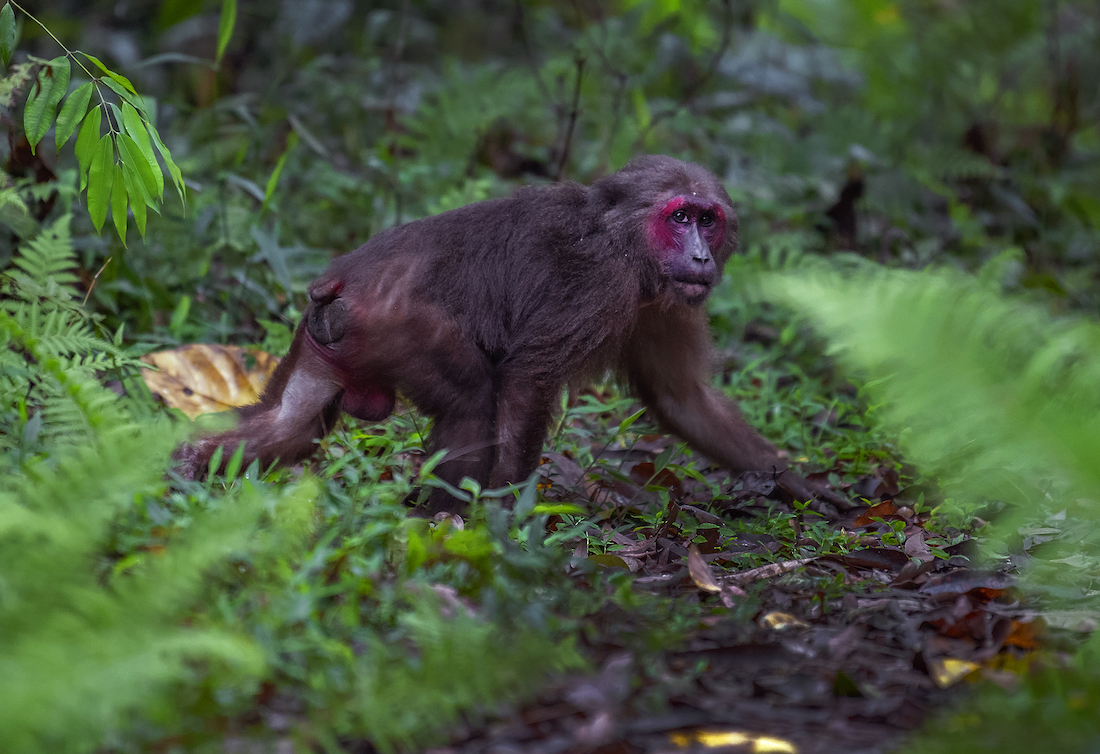
“It is not just the hoolock gibbons that make this sanctuary so fascinating. Six other species of primates – capped langurs, stump-tailed macaques, northern pig-tailed macaques, rhesus macaques, eastern Assamese macaque, and the nocturnal Bengal slow loris, are also found here. We also have leopards, wild boars, Malayan giant squirrels, and more,” said Anil.
His words made the forest appear even more alive to me. What if a leopard is lurking just behind the next tree or an elephant herd is approaching in our direction? The thoughts just sent shivers down my spine. Indeed, no vehicle safari can match the thrill of walking in a biodiverse forest!
We had walked for only around fifteen minutes when, suddenly, Anil signalled for us to stop. Making as little noise as possible while moving through the leaf litter, ferns, and other small plants crowding the forest floor, we left the main trail and entered an extremely narrow side trail beside us. Anil told us to stop at a point and look up.
And there they were – for whom I had travelled all this distance – the Western hoolock gibbons! I really had to crane my neck to its maximum as they were up on the highest branches of some incredibly tall Hollong trees. It was a small group of hoolocks – two males and a female with an infant.
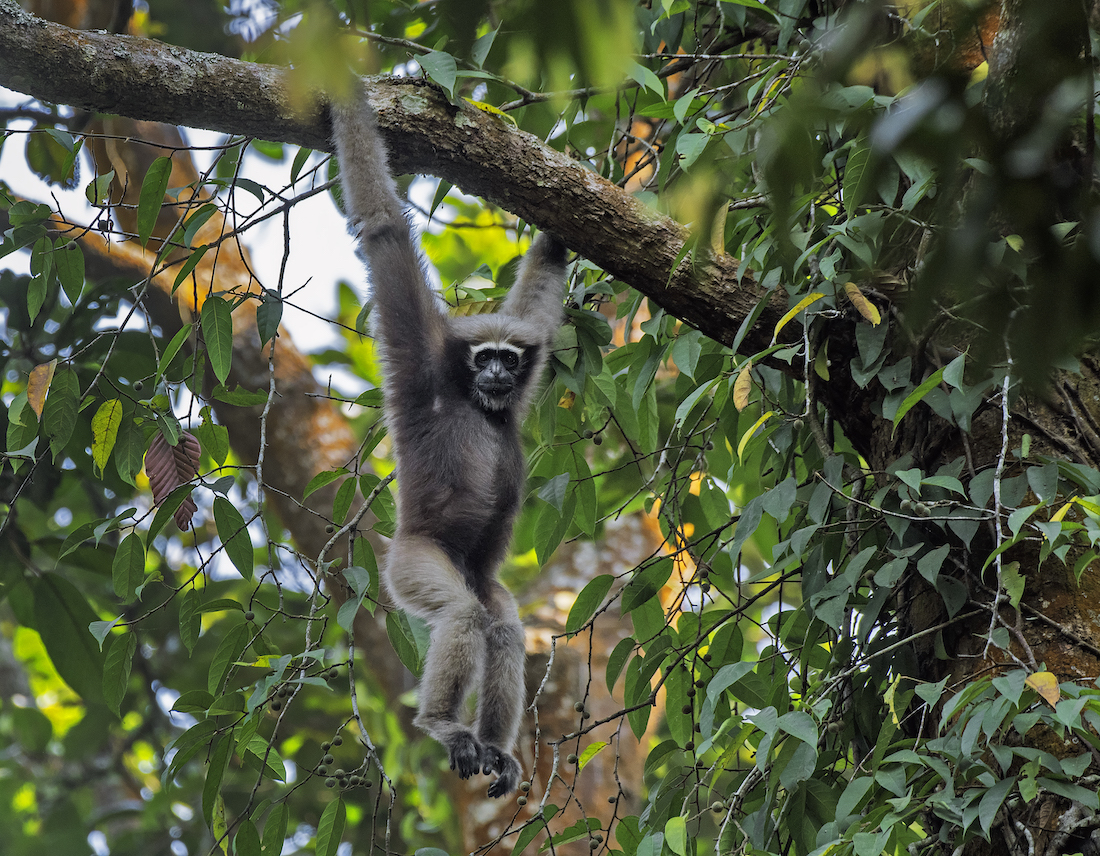
It is easy to distinguish adult male Western hoolock gibbons from adult females due to the different colouring of their pelage. While the males sport black pelage with white eyebrow-like fur over the eyes, the females have brownish-grey fur with white rings around the eyes and mouth, giving their faces a mask-like appearance. Juveniles are born with pale-coloured pelage that turns black for both sexes in around a month and again changes to brownish for females as they reach sexual maturity.
To me, it was a delight and wonder to watch these gibbons (adults weighing around 6 kg) move effortlessly from one branch to the other on the tree. This type of movement is called brachiation, which the hoolocks can perform with their long forelimbs, elongated, hook-like fingers, flexible ankle joints and prehensile feet. They also exhibit suspensory feeding, hanging on a branch with one arm and using the other to feed on fruits, which constitute the majority of their diet. Occasionally, and during food scarcity, they feed on other plant parts, insects, and bird eggs.
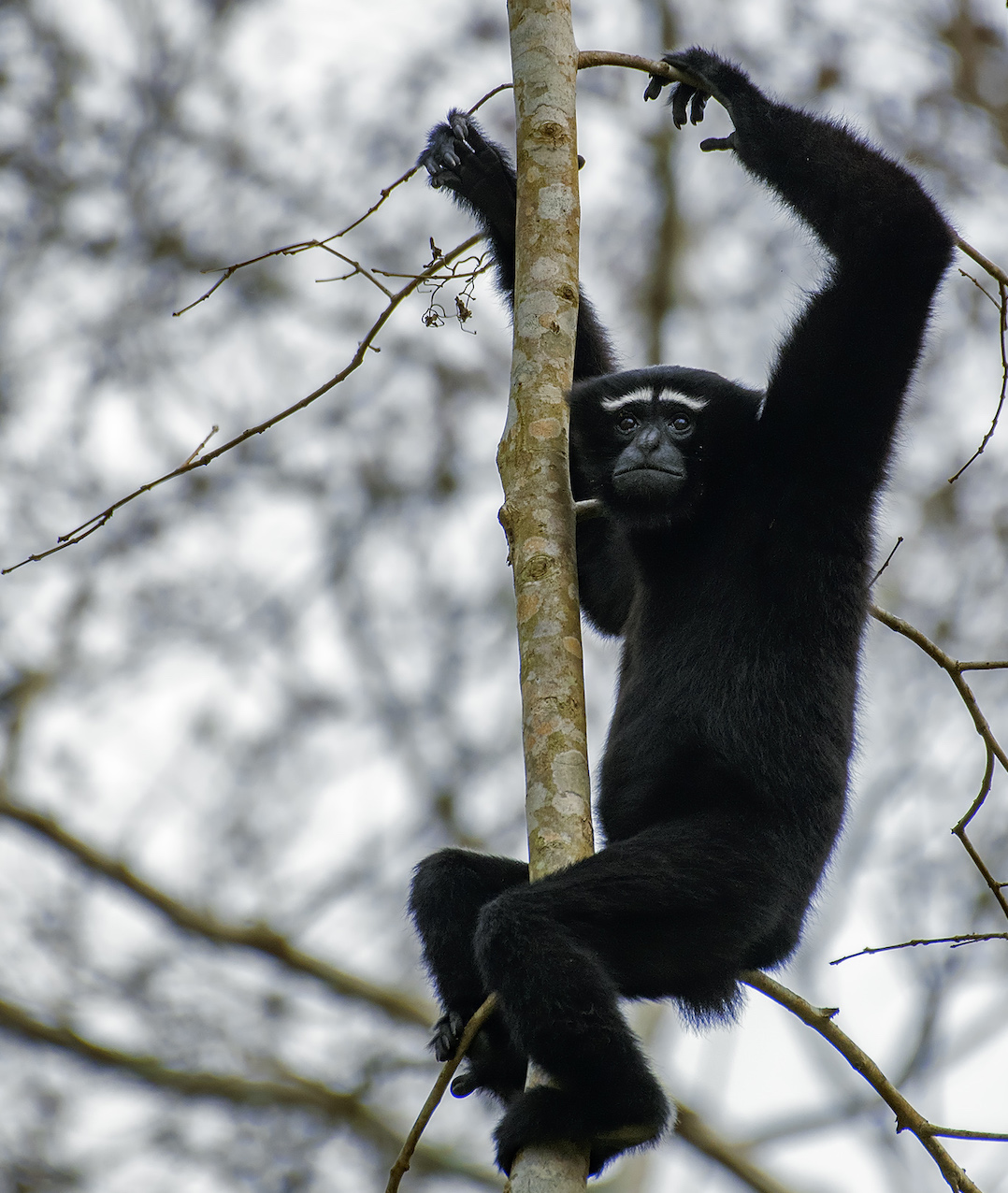
“Once their partner dies, they will not marry again,” mentioned Heremba. I smiled. What he meant, in more scientific terms, was that the hoolock gibbons are monogamous, breeding with only a single partner during their lifetime, although some exceptions have been noted.
We stood at the spot for nearly half an hour, watching the delightful antics of the hoolock gibbon family before it was time to move. The sun was getting stronger now, and the heat and humidity were on the rise. The sanctuary would also soon be closing down for the day.
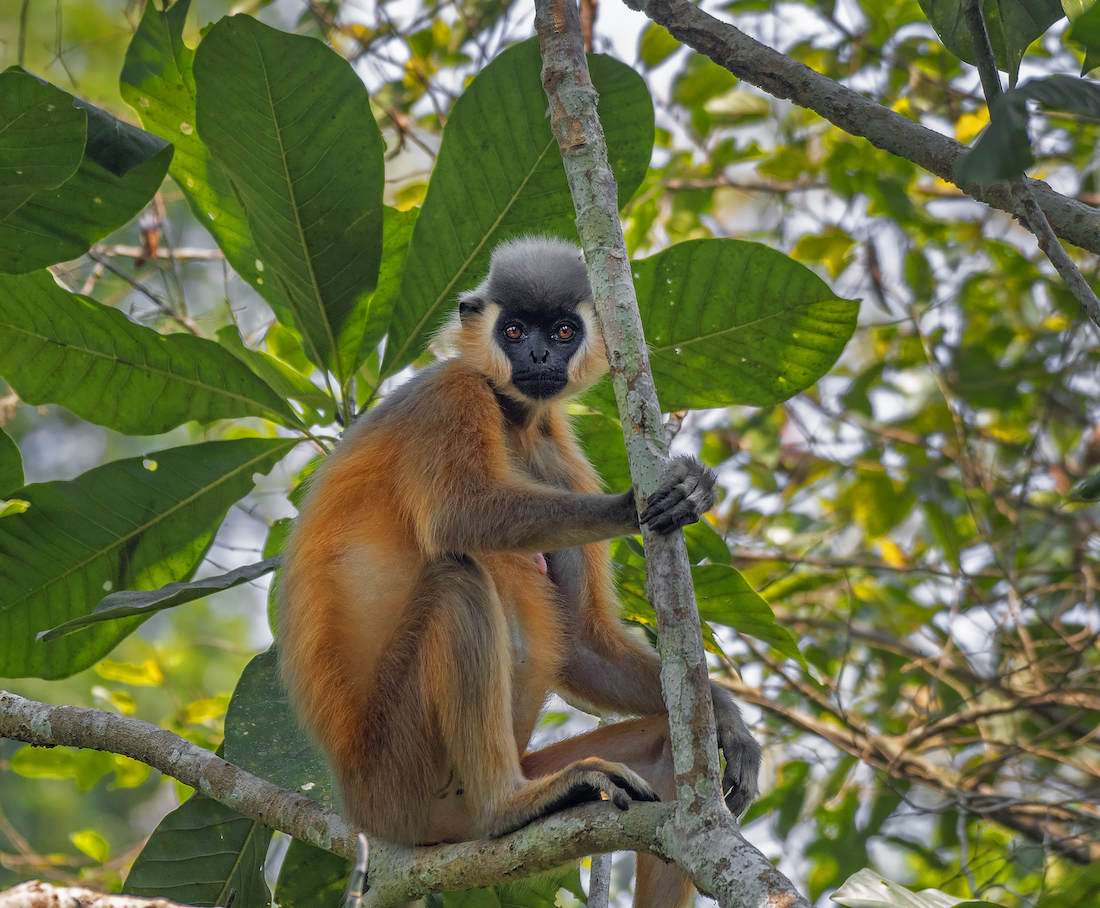
We walked for another half an hour inside the forest when we had the good luck of spotting a pair of playful Malayan giant squirrels and a gorgeous capped langur before exiting through a trail and onto the railway track I had noticed while arriving at the sanctuary. The track totally dissected the forest with a complete absence of canopy along the length of the track as far as my eyes could see.
My mind was now flooded with questions. What was a railway line doing in the middle of a protected area, fragmenting one that is already quite small in size at only 20.98 square kilometres and is one of the last homes of so many highly threatened species?
I learned from the guides that the railway track, cutting through the forest for around 1.65 km, existed since the 1880s when the area was part of a Reserve Forest. Over the years, the expanding tea gardens kept gnawing into the forest area, disconnecting it from surrounding forests. When the forest was declared a sanctuary in 1997, no efforts were made to reroute the railway track. The railway line continued to fragment the sanctuary into two unequal compartments, with hoolock gibbon families on either side disconnected from each other. Also, by this time, the Hollongapar Gibbon Sanctuary had become a “forest island” with hardly any corridor connectivity for its primate populations to move.
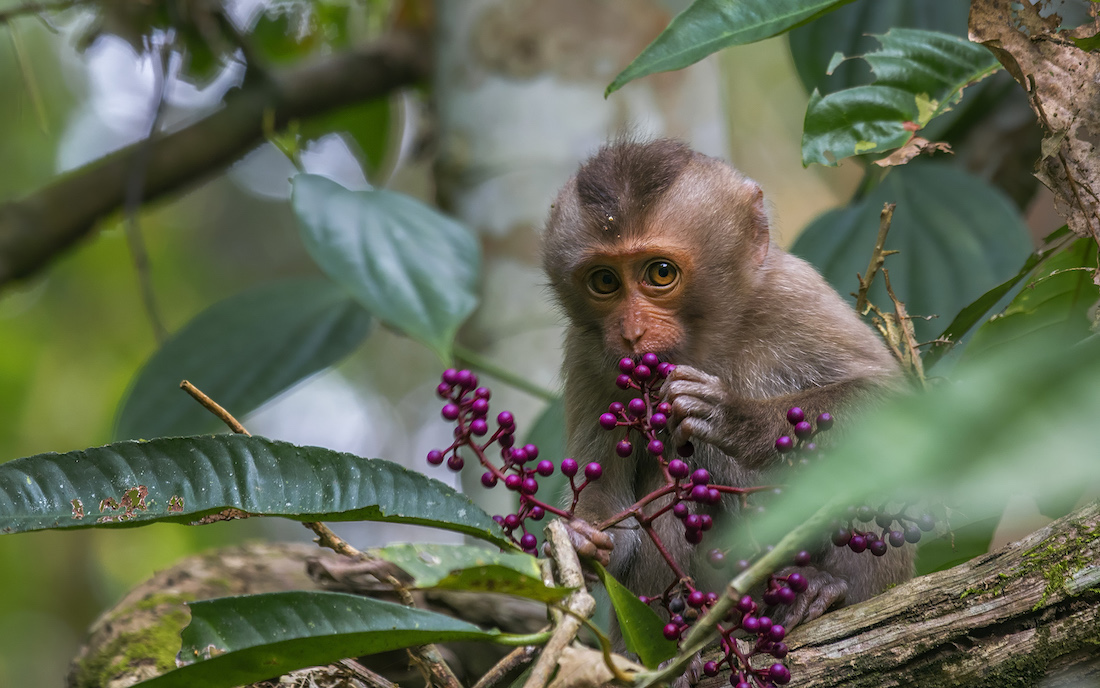
“During my decades of service, I have noticed many elephants, rhesus macaques, and other wildlife fall prey to train accidents on this railway track. Hoolock gibbons, however, never come down, and hence, do not die this way, but their populations on either side of the track remain isolated, making them vulnerable to inbreeding,” Heremba explained the sad state of affairs.
As we walked further along the railway track, we came across an iron bridge over the track painted green and with creepers crawling along its length. Heremba mentioned that it was a conservation intervention installed to help the gibbons and other arboreal wildlife cross the treeless patch above the railway track.

In 2015, the state forest department installed this artificial canopy bridge over the railway tract following guidelines by the Wildlife Institute of India. Unfortunately, however, the hoolock gibbons never used the canopy bridge. More recently, new efforts have been launched again to restore connectivity with better-designed artificial bridges.
Prior to this, efforts were made in 2006 to create natural canopies over the railway line by planting native trees on both sides of the track and allowing them to grow and connect over the track. Such natural canopy bridges proved to bear fruit when, in 2019, the first observation of hoolock gibbons crossing over the track was recorded. However, such canopies often lack permanency as the railway department frequently prunes trees growing along the track, clearing off the canopies. They, too, cannot be blamed for this approach, as for the railways, the safety of their passengers is a top priority. A fallen tree or branch on the railway track can lead to major accidents.
With the possibility of electrification and broadening of the track in the future, the issue could even get magnified, and no mitigation measures might work. Hence, experts have suggested rerouting the railway track outside the sanctuary as a permanent solution. Given the length of the track passing through the sanctuary being only 1.65 km, the rerouting should not be a mammoth task for the concerned department.

As I was returning to my car, bidding adieu to my knowledgeable guides, I heard the whistle of an approaching train. Soon, a train chugged past me along the railway track, disturbing the peace of the sanctuary and helping me witness the issue in real-time.
Today, around 125 Western hoolock gibbons, a species on the brink, survive in the fragmented habitat of the Hollongapar Gibbon Sanctuary. In the rest of their range, this rare primate also exists in isolated populations of forest islands, mostly in non-protected areas. These gibbons’ highly arboreal life cycle prevents them from coming to the ground and moving across deforested habitats in search of new forests, subjecting their populations to the threat of inbreeding and gradual weakening of the gene pool.
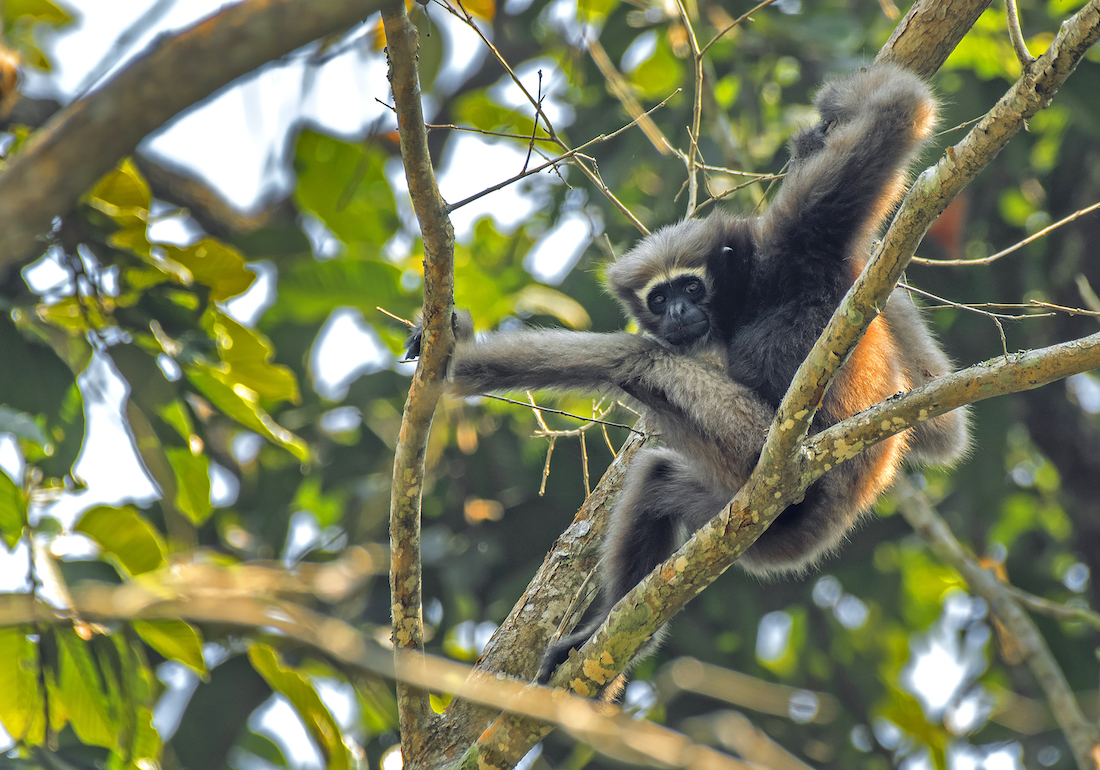
What these Western hoolock gibbons need now is uninterrupted stretches of forested habitats across their range and corridor connectivity between their habitats for a secure future for the species. Yet, even in the only protected area dedicated to them, a railway line threatens their future.
To learn more about the threat of linear infrastructure to conservation, read the following article here.

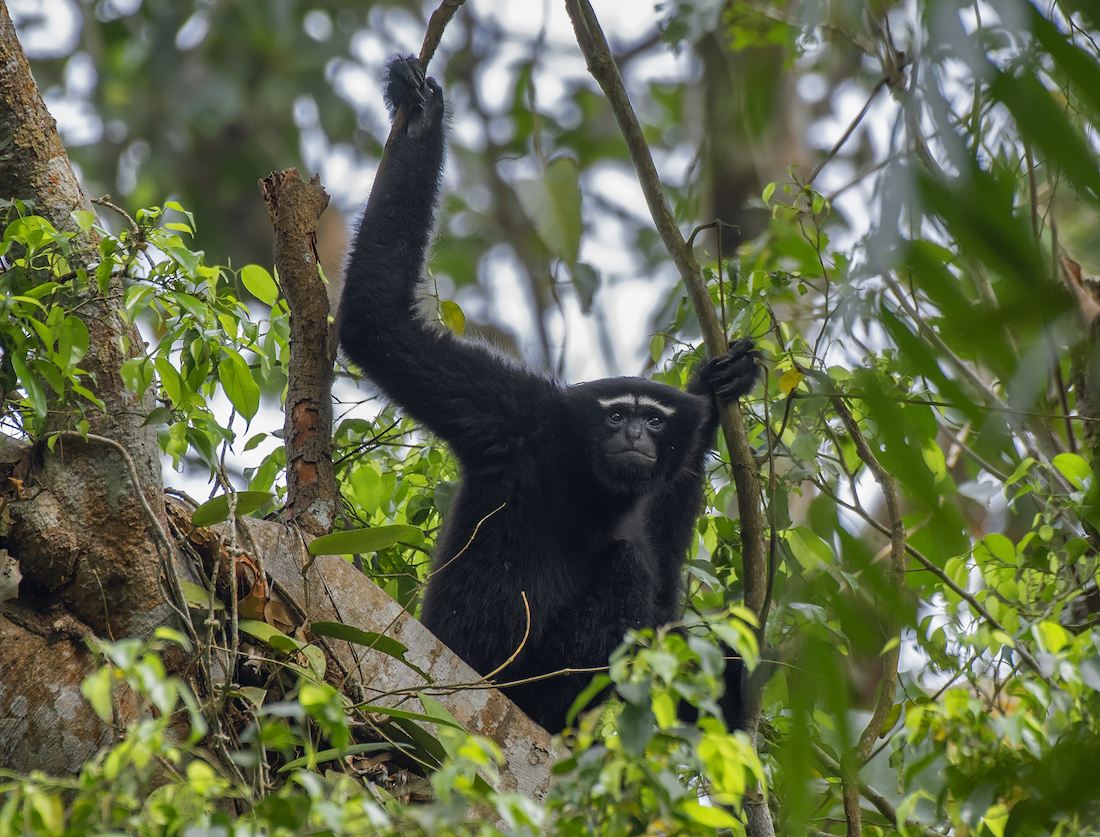
With the increasing construction of linear infrastructure like roads and pipelines, are we unknowingly destroying the habitats of vulnerable species like the Western Hoolock Gibbon, pushing them closer to extinction?”,
“refusal